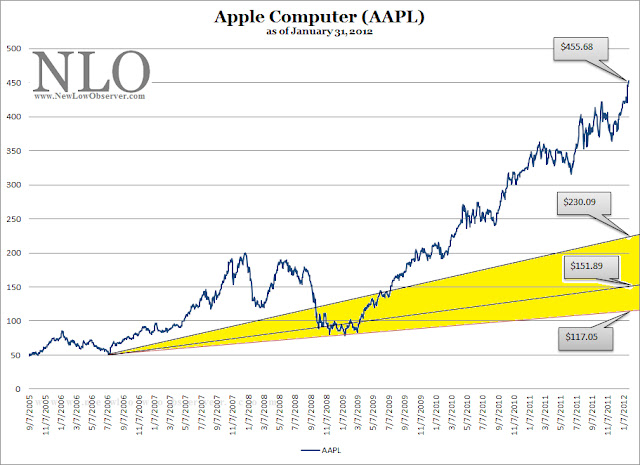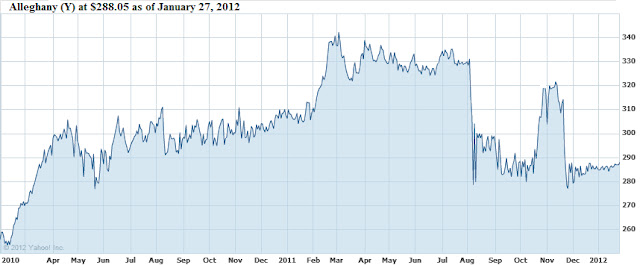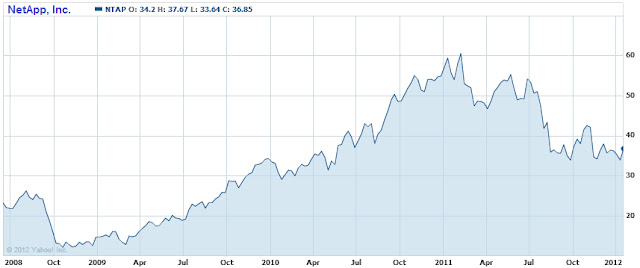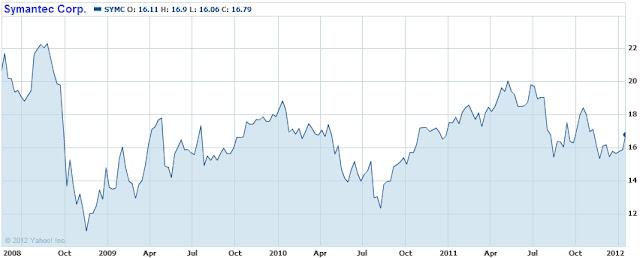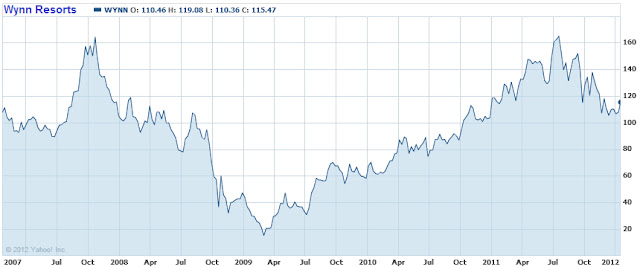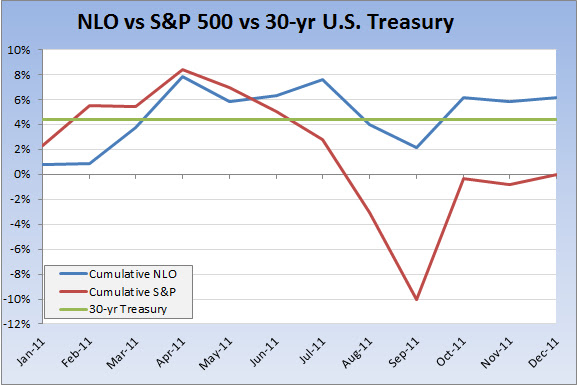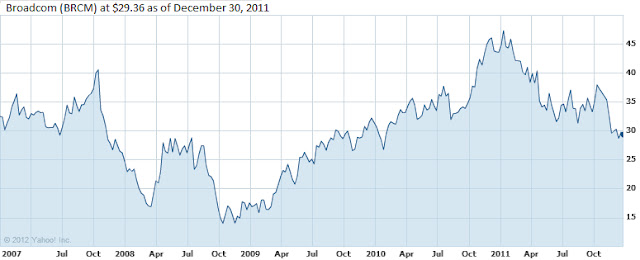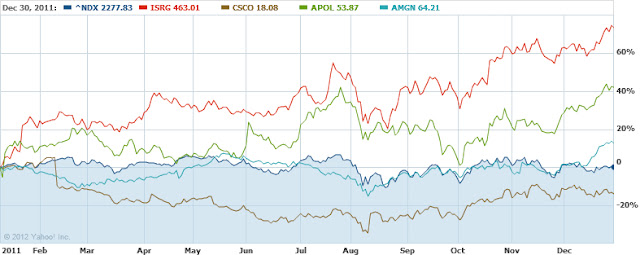Members
-
Topics
Archives
-
-
Recent Posts
-
-
-
Investor Education
Market Return After Exceptional Years
Dollar Cost Averaging Tool
Dow Theory: The Formation of a Line
Dividend Capture Strategy Analysis
Golden Cross – How Golden Is It?
Debunked – Death Cross
Work Smart, Not Hard
Charles H. Dow, Father of Value Investing
It's All About the Dividends
Dow Theory: Buying in Scales
How to Avoid Losses
When Dividends are Canceled
Cyclical and Secular Markets
Inflation Proof Myth
What is Fair Value?
Issues with P-E Ratios
Beware of Gold Dividends
Gold Standard Myth
Lagging Gold Stocks?
No Sophisticated Investors
Dollar down, Gold up?
Problems with Market Share
Aim for Annualized Returns
Anatomy of Bear Market Trade
Don’t Use Stop Orders
How to Value Earnings
Low Yields, Big Gains
Set Limits, Gain More
Ex-Dividend Dates -
-
Historical Data
1290-1950: Price Index
1670-2012: Inflation Rate
1790-1947: Wholesale Price Cycle
1795-1973: Real Estate Cycle
1800-1965: U.S. Yields
1834-1928: U.S. Stock Index
1835-2019: Booms and Busts
1846-1895: Gold/Silver Value
1853-2019: Recession/Depression Index
1860-1907: Most Active Stock Average
1870-2033: Real Estate Cycles
1871-2020: Market Dividend Yield
1875-1940: St. Louis Rents
1876-1934: Credit-New Dwellings
1896-1925: Inflation-Stocks
1897-2019: Sentiment Index
1900-1903: Dow Theory
1900-1923: Cigars and Cigarettes
1900-2019: Silver/Dow Ratio
1901-2019: YoY DJIA
1903-1907: Dow Theory
1906-1932: Barron's Averages
1907-1910: Dow Theory
1910-1913: Dow Theory
1910-1936: U.S. Real Estate
1910-2016: Union Pacific Corp.
1914-2012: Fed/GDP Ratio
1919-1934: Barron's Industrial Production
1920-1940: Homestake Mining
1921-1939: US Realty
1922-1930: Discount Rate
1924-2001: Gold/Silver Stocks
1927-1937: Borden Co.
1927-1937: National Dairy Products
1927-1937: Union Carbide
1928-1943: Discount Rate
1929-1937: Monsanto Co.
1937-1969: Intelligent Investor
1939-1965: Utility Stocks v. Interest Rates
1941-1967: Texas Pacific Land
1947-1970: Inventory-Sales Ratio
1948-2019: Profits v. DJIA
1949-1970: Dow 600? SRL
1958-1976: Gold Expert
1963-1977: Farmland Values
1971-2018: Nasdaq v. Gold
1971-1974: REIT Crash
1972-1979: REIT Index Crash
1986-2018: Hang Seng Index Cycles
1986-2019: Crude Oil Cycles
1999-2017: Cell Phone Market Share
2008: Transaction History
2010-2021: Bitcoin Cycles -
Interesting Read
Inside a Moneymaking Machine Like No Other
The Fuzzy, Insane Math That's Creating So Many Billion-Dollar Tech Companies
Berkshire Hathaway Shareholder Letters
Forex Investors May Face $1 Billion Loss as Trade Site Vanishes
Why the oil price is falling
How a $600 Million Hedge Fund Disappeared
Hedge Fund Manager Who Remembers 1998 Rout Says Prepare for Pain
Swiss National Bank Starts Negative
Tice: Crash is Coming...Although
More on Edson Gould (PDF)
Schiller's CAPE ratio is wrong
Double-Digit Inflation in the 1970s (PDF)
401k Crisis
Quick Link Archive
Monthly Archives: January 2012
Apple (AAPL) and Speed Resistance Lines
Posted in AAPL, Edson Gould, NFLX, speed resistance line, William X. Scheinman
Tagged members
Insurance Watch List: January 27, 2012
NamePriceP/EEPSYieldP/Bpayout ratio% from Low
Alleghany Corp.288.0518.0715.9400.880.00%3.98%
National Western Life Insurance143.27.2819.660.30%0.41.83%10.15%
American National Insurance72.6411.296.444.20%0.5347.83%10.55%
Tower Group, Inc.21.9110.82.033.40%0.8536.95%10.77%
HCC Insurance Holdings, Inc.27.9411.562.422.20%0.9325.62%13.30%
Loews Corp.37.6312.253.070.70%0.798.14%14.38%
XL Group plc20.328.190.722.20%0.6761.11%14.75%
Kansas City Life Insurance32.3613.62.383.30%0.5145.38%15.53%
Sun Life Financial20.1413.631.486.90%0.8293.24%15.75%
Everest Re Group85.1525.563.332.30%0.7657.66%16.09%
Unum Group22.928.012.861.80%0.7114.69%16.23%
Endurance Specialty Holdings37.0870.760.523.20%0.58230.77%17.08%
Willis Group Holdings38.7324.421.592.70%2.5165.41%17.22%
Hanover Insurance Group36.6935.871.023.30%0.67117.65%18.35%
| Symbol | |||||||||||||
| Y | NWLI | ANAT | TWGP | HCC | L | XL | KCLI | SLF | RE | UNM | ENH | WSH | THG |
In the News: January 28, 2012
High-TechEmployee AntiTrust Litigation (PDF) at Lieff, Cabraser, Heimann & Bernstein,LLP
Apple,Google Must Face Antitrust Lawsuit Over Tech Employee-Poaching Ban atBloomberg
FormerGroupon sales reps countersue over tactics at Reuters
WhatMakes FPA Crescent Tick? at Morningstar
Olympuspanel clears accounting firms of blame in scandal at Reuters
TheFannie and Freddie Chronicles, Cont. at Barron’s
PaulsonDigs Deep Hole, Needs Big Returns To Recoup Losses at Barron’s
Digitalmusic sales top physical sales at CNNMoney
Milkfutures: Better than gold at CNNMoney
FHAsays: It's ok to flip that house at CNNMoney
Yourcell phone is out of your control at CNNMoney
Gold,Silver Move Towards 3-4% Weekly Gains; Time To Sell Miners? at Barron’s
GoldETF almost a sell at MarketWatch
What'sbehind Netflix's 22% spike? at CNNMoney
Is the ETFbubble about to burst? At CNNMoney
GoldIs The Hottest Currency In The World at Forbes
BePrepared To Sell Your Soul If You Use Google at Forbes
MerrillLynch Hit With $1 Million Fine For Employee Note Collections at Forbes
The Big401(k) Match Mistake at Forbes
ThePitfalls Of Variable Annuities at Forbes
FacingSEC Charges, Ex-Fannie Chief Daniel Mudd Resigns At Fortress at Forbes
Whathappens when you walk away from your home? at Reuters
Questioningthe Volcker Rule at The Atlantic
Posted in In the news
Thoughts on Gold
We’re opting for the view that goldexperiences good times and bad rather than the view that our nation is comingto an end. After all, the redemption ofour gold, as with all forms of insurance, is not something that we look forwardto.
Posted in Dow Theory Letters, gold, Richard Russell, Silver, Simmons First National
Tagged members
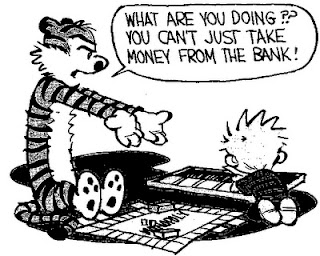 |
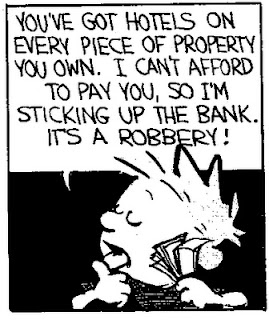
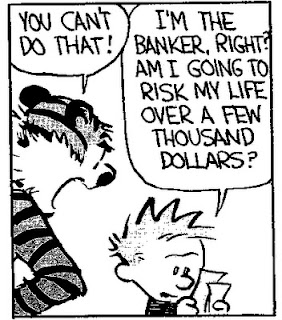
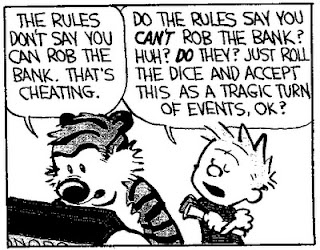
Nasdaq 100 Watch List
| Symbol | Name | Price | P/E | EPS | Yield | P/B | % from Yr Low |
| BMC | BMC Software, Inc. | 34.01 | 13.93 | 2.44 | N/A | 3.74 | 7.56% |
| DTV | DIRECTV | 43.03 | 13.41 | 3.21 | N/A | N/A | 8.06% |
| CHRW | C.H. Robinson Worldwide, Inc. | 67.66 | 26.33 | 2.57 | 2.00% | 8.92 | 8.60% |
| NTAP | NetApp, Inc. | 36.85 | 22.46 | 1.64 | N/A | 3.54 | 11.67% |
| SYMC | Symantec Corporation | 16.79 | 19.1 | 0.88 | N/A | 2.69 | 12.38% |
| INFY | Infosys Limited | 52.29 | 18.09 | 2.89 | 1.10% | 5.03 | 13.38% |
| EXPE | Expedia, Inc. | 31.04 | 9.21 | 3.37 | 3.60% | 1.59 | 13.78% |
| VOD | Vodafone Group Plc | 27.76 | 13.16 | 2.11 | 3.60% | 1.07 | 14.19% |
| WYNN | Wynn Resorts, Limited | 115.47 | 26.95 | 4.28 | 1.80% | 5.66 | 14.30% |
| Symbol | Name | 2011 | 2012 | % change |
| CEPH | Cephalon, Inc. | 59.64 | 81.5 | 36.65% |
| CSCO | Cisco Systems, Inc. | 20.73 | 19.92 | -3.91% |
| QGEN | Qiagen N.V. | 18.56 | 15.42 | -16.92% |
| TEVA | Teva Pharmaceutical | 52.86 | 45.83 | -13.30% |
| ATVI | Activision Blizzard, Inc | 11.25 | 12.22 | 8.62% |
| average | 2.23% | |||
| Nasdaq 100 | 2268.32 | 2437.02 | 7.44% |
The Time Has Come For California Water Services (CWT)
CaliforniaWater Services Group (CWT) has finally arrived at the point that we’veanticipated for the last 2 years. OnJanuary 3, 2010, we submitted an investment observation that CWT would continueto trade in an established 6-year range that had been identified for at least4 other periods. Just as a debrief, inthe 2010 piece (found here), we said the following periods traded in 6-year ranges afterbreaking out of the previous range:
- 1976to 1982
- 1985to 1993
- 1993to 1997
- 1997to 2004
- 2005to 2011
-
$17.28
-
$13.70
-
$10.52
Posted in California Water Service, CWT, Dividend Achievers, dividends, water utilities
Tagged members
2011 Performance Review
| Year | Dow | S&P 500 | Nasdaq | NLO Portfolio |
| 2006 | 16.29% | 15.74% | 9.52% | 18.30% |
| 2007 | 6.43% | 5.46% | 9.81% | 19.80% |
| 2008 | -33.84% | -37.22% | -40.54% | 14.35% |
| 2009 | 18.82% | 27.11% | 43.89% | 36.65% |
| 2010 | 11.02% | 14.32% | 16.91% | 7.14% |
| 2011 | 5.53% | 0.00% | -1.80% | 6.20% |
NLO Dividend Watch List: January 13, 2012
January 13, 2012
| Symbol | Name | Price | % Yr Low | P/E | EPS (ttm) | Dividend | Yield | Payout Ratio |
| TR | Tootsie Roll Industries Inc | 23.63 | 3.55% | 32.82 | 0.72 | 0.32 | 1.35% | 44% |
| BCR | CR Bard, Inc. | 85.45 | 5.75% | 21.97 | 3.89 | 0.76 | 0.89% | 20% |
| JW-A | John Wiley & Sons Inc. | 44.59 | 6.45% | 15.65 | 2.85 | 0.80 | 1.79% | 28% |
| CHRW | C.H. Robinson Worldwide | 66.73 | 7.11% | 25.96 | 2.57 | 1.32 | 1.98% | 51% |
| WAG | Walgreen Co. | 32.63 | 7.55% | 11.02 | 2.96 | 0.90 | 2.76% | 30% |
| BDX | Becton, Dickinson and Co. | 74.91 | 7.64% | 13.33 | 5.62 | 1.80 | 2.40% | 32% |
| CWT | California Water Service | 17.94 | 7.75% | 18.31 | 0.98 | 0.62 | 3.46% | 63% |
| WST | West Pharmaceutical | 38.29 | 7.86% | 21.15 | 1.81 | 0.72 | 1.88% | 40% |
| OMI | Owens & Minor, Inc. | 27.96 | 8.08% | 15.71 | 1.78 | 0.80 | 2.86% | 45% |
| ANAT | American National Insurance | 71.06 | 8.14% | 11.03 | 6.44 | 3.08 | 4.33% | 48% |
| CLX | Clorox Co. | 68.03 | 8.38% | 19.61 | 3.47 | 2.40 | 3.53% | 69% |
| AVP | Avon Products, Inc. | 17.52 | 8.89% | 10.31 | 1.70 | 0.92 | 5.25% | 54% |
| MATW | Matthews International Corp. | 31.19 | 9.17% | 12.68 | 2.46 | 0.36 | 1.15% | 15% |
| KO | Coca-Cola Co | 66.99 | 9.30% | 12.31 | 5.44 | 1.88 | 2.81% | 35% |
| AROW | Arrow Financial Corp. | 23.58 | 9.67% | 12.75 | 1.85 | 1.00 | 4.24% | 54% |
| BMO | Bank of Montreal | 56.92 | 9.82% | 11.07 | 5.14 | 2.73 | 4.80% | 53% |
| BMS | Bemis Co Inc | 29.89 | 9.85% | 15.02 | 1.99 | 0.96 | 3.21% | 48% |
| CAH | Cardinal Health, Inc. | 41.25 | 9.91% | 16.11 | 2.56 | 0.86 | 2.08% | 34% |
| TGT | Target Corp. | 49.82 | 10.03% | 11.59 | 4.30 | 1.20 | 2.41% | 28% |
| PEP | PepsiCo Inc. | 64.4 | 10.09% | 16.14 | 3.99 | 2.06 | 3.20% | 52% |
| WTR | Aqua America Inc | 21.26 | 10.27% | 21.47 | 0.99 | 0.66 | 3.10% | 67% |
| T | AT&T Inc | 30.07 | 10.55% | 15.26 | 1.97 | 1.76 | 5.85% | 89% |
| SJW | SJW Corp. | 23.11 | 10.73% | 19.42 | 1.19 | 0.69 | 2.99% | 58% |
| NFG | National Fuel Gas Co. | 49.35 | 10.87% | 15.97 | 3.09 | 1.42 | 2.88% | 46% |
| CATO | Cato Corp. | 23.98 | 10.97% | 10.90 | 2.20 | 0.92 | 3.84% | 42% |
| 25 Companies | ||||||||
Not much movement has occurred since our last watch list on December 23, 2011.
Top Five Performance Review
In our ongoing review of the NLO Dividend Watch List, we have taken the top five stocks on our list from January 14, 2011 and have check their performance one year later. The top five companies on that list can be seen in the table below.
| Symbol | Name | 2010 Price | 2011 Price | % change |
| ABT | Abbott Laboratories | 46.89 | 55.43 | 18.21% |
| CL | Colgate-Palmolive Co. | 78.31 | 88.52 | 13.04% |
| CLX | Clorox Co. | 63.98 | 68.03 | 6.33% |
| LLY | Eli Lilly & Co. | 34.91 | 39.94 | 14.41% |
| KMB | Kimberly-Clark Corp. | 63.64 | 72.7 | 14.24% |
| Average | 13.25% | |||
| DJI | Dow Jones Industrial | 11,787.38 | 12,422.06 | 5.38% |
| SPX | S&P 500 | 1,293.24 | 1,289.09 | -0.32% |
Disclaimer
4-Year Cycle Update
|
Symbol
|
Name
|
Price
|
P/E
|
EPS
|
% Yield
|
Price/Book
|
% from Low
|
|
Tootsie Roll
|
23.77
|
32.82
|
0.72
|
1.40
|
2.03
|
4.12%
|
|
|
C.R. Bard, Inc.
|
85.81
|
22.05
|
3.89
|
0.90
|
3.96
|
6.14%
|
|
|
Becton, Dickinson
|
74.24
|
13.22
|
5.62
|
2.50
|
3.26
|
6.70%
|
|
|
John Wiley & Sons
|
44.77
|
15.7
|
2.85
|
1.80
|
2.66
|
6.88%
|
|
|
California Water Service
|
17.83
|
18.29
|
0.98
|
3.40
|
1.64
|
7.09%
|
|
|
Owens & Minor
|
27.8
|
15.61
|
1.78
|
2.90
|
1.93
|
7.46%
|
|
|
Clorox Company
|
67.76
|
19.54
|
3.47
|
3.60
|
-116.98
|
8.64%
|
|
|
West Pharmaceutical
|
38.55
|
21.28
|
1.81
|
1.90
|
1.85
|
8.73%
|
|
|
Frisch's Restaurants
|
20.27
|
22.93
|
0.88
|
3.30
|
0.8
|
9.92%
|
Posted in 4 1/2 year, 4 year, Charles H. Dow, Dow Theory Letters, Richard Russell
Tagged members
Crime and Punishment
Posted in AADB, Arthur Andersen, Deloitte and Touche, Enron, MF Global, PCAOB, PwC
Tagged members
NLO Dividend Watch List: December 30, 2011
December 30, 2011
| Symbol | Name | Price | % Yr Low | P/E | EPS (ttm) | Dividend | Yield | Payout Ratio |
| TR | Tootsie Roll Industries Inc | 23.67 | 3.72% | 32.88 | 0.72 | 0.32 | 1.35% | 44% |
| FRS | Frisch's Restaurants, Inc | 19.4 | 5.21% | 22.05 | 0.88 | 0.64 | 3.30% | 73% |
| BMO | Bank of Montreal | 54.81 | 5.75% | 10.66 | 5.14 | 2.74 | 5.00% | 53% |
| BCR | CR Bard, Inc. | 85.5 | 5.82% | 21.98 | 3.89 | 0.76 | 0.89% | 20% |
| JW-A | John Wiley & Sons Inc. | 44.4 | 5.99% | 15.58 | 2.85 | 0.80 | 1.80% | 28% |
| LM | Legg Mason, Inc. | 24.05 | 6.37% | 14.66 | 1.64 | 0.32 | 1.33% | 20% |
| SCHW | Charles Schwab Corp. | 11.26 | 6.63% | 16.81 | 0.67 | 0.24 | 2.13% | 36% |
| WST | West Pharmaceutical | 37.95 | 6.90% | 20.97 | 1.81 | 0.72 | 1.90% | 40% |
| EXPD | Expeditors Intl of Washington | 40.96 | 7.08% | 22.63 | 1.81 | 0.50 | 1.22% | 28% |
| GS | Goldman Sachs Group, Inc. | 90.43 | 7.31% | 13.76 | 6.57 | 1.40 | 1.55% | 21% |
| BDX | Becton, Dickinson and Co. | 74.72 | 7.37% | 13.30 | 5.62 | 1.80 | 2.41% | 32% |
| OMI | Owens & Minor, Inc. | 27.79 | 7.42% | 15.61 | 1.78 | 0.80 | 2.88% | 45% |
| CAH | Cardinal Health, Inc. | 40.61 | 8.21% | 15.86 | 2.56 | 0.86 | 2.12% | 34% |
| AVP | Avon Products, Inc. | 17.47 | 8.58% | 10.28 | 1.70 | 0.92 | 5.27% | 54% |
| WAG | Walgreen Co. | 33.06 | 8.97% | 11.17 | 2.96 | 0.90 | 2.72% | 30% |
| AROW | Arrow Financial Corp. | 23.44 | 9.02% | 12.67 | 1.85 | 1.00 | 4.27% | 54% |
| UTX | United Technologies Corp. | 73.09 | 9.30% | 13.71 | 5.33 | 1.92 | 2.63% | 36% |
| BMI | Badger Meter, Inc. | 29.43 | 9.57% | 18.28 | 1.61 | 0.64 | 2.17% | 40% |
| CWT | California Water Service | 18.26 | 9.67% | 18.63 | 0.98 | 0.62 | 3.40% | 63% |
| CLX | Clorox Co. | 66.56 | 9.91% | 19.18 | 3.47 | 2.40 | 3.61% | 69% |
| MATW | Matthews International Corp. | 31.43 | 10.01% | 12.78 | 2.46 | 0.36 | 1.15% | 15% |
| BMS | Bemis Co Inc | 30.08 | 10.55% | 15.12 | 1.99 | 0.96 | 3.19% | 48% |
Last Year Review
Disclaimer
Nasdaq 100 Watch List: December 30, 2011 (revised)
Below are the Nasdaq 100 companies that are within 10% of their respective 52-week lows. Stocks that appear on our watch lists are not recommendations to buy. Instead, they are the starting point for doing your research and determining the best company to buy. Ideally, a stock that is purchased from this list is done after a considerable decline in the price and rigorous due diligence.
| Symbol | Name | Price | P/E | EPS | Yield | P/B | % from low |
| BMC | BMC Software, Inc. | 32.78 | 13.43 | 2.44 | N/A | 3.65 | 1.83% |
| ORCL | Oracle Corp. | 25.65 | 14.11 | 1.82 | 0.90% | 3.1 | 3.76% |
| VMED | Virgin Media Inc. | 21.38 | 68.53 | 0.31 | 0.70% | 4.99 | 4.19% |
| SYMC | Symantec Corp. | 15.65 | 17.8 | 0.88 | N/A | 2.54 | 4.75% |
| CTRP | Ctrip.com | 23.4 | 19.93 | 1.17 | N/A | 3.09 | 4.79% |
| LRCX | Lam Research | 37.02 | 7.67 | 4.82 | N/A | 1.89 | 6.35% |
| EXPE | Expedia, Inc. | 29.02 | 8.61 | 3.37 | 3.90% | 1.49 | 6.38% |
| BRCM | Broadcom Corp | 29.36 | 17.68 | 1.66 | 1.20% | 2.57 | 6.42% |
| SRCL | Stericycle, Inc. | 77.92 | 30.92 | 2.52 | N/A | 5.66 | 6.67% |
| EXPD | Expeditors Int'l of Was | 40.96 | 22.63 | 1.81 | 1.20% | 4.46 | 7.08% |
| DTV | DIRECTV | 42.76 | 13.33 | 3.21 | N/A | N/A | 7.38% |
| AMZN | Amazon.com | 173.1 | 91.25 | 1.9 | N/A | 10.19 | 7.79% |
| CA | CA Inc. | 20.22 | 11.86 | 1.7 | 1.00% | 1.74 | 8.62% |
| AVGO | Avago Tech. | 28.86 | 13.18 | 2.19 | 1.60% | 3.57 | 9.24% |
| WYNN | Wynn Resorts | 110.49 | 25.79 | 4.28 | 1.80% | 5.32 | 9.37% |
| MSFT | Microsoft Corp. | 25.96 | 9.44 | 2.75 | 3.10% | 3.68 | 9.77% |
| NTAP | NetApp, Inc. | 36.27 | 22.1 | 1.64 | N/A | 3.42 | 9.91% |
Watch List Summary
The Punchline: Broadcom is a strong company in a strong industry that is experiencing consolidation, thereby reducing the number of competitors. Consider buying BRCM in two stages, once at the current price and again at any price below $25.17.
Watch List Performance Review
In our ongoing review of the Nasdaq 100 Watch List, we have taken the stocks from our list of January 7, 2011 (found here) and have checked their performance one year later. The companies on that list are provided below with the closing prices from January 7, 2011 to December 30, 2011.
| Symbol | Name | Jan-11 | Dec-11 | % change | |||
| ISRG | Intuitive Surgical | 267.4 | 463.01 | 73.15% | |||
| CEPH | Cephalon | 60.32 | 81.49 | 35.10% | |||
| CSCO | Cisco Systems | 20.97 | 18.08 | -13.78% | |||
| APOL | Apollo Group | 37.98 | 53.87 | 41.84% | |||
| AMGN | Amgen | 56.98 | 64.21 | 12.69% | |||
| Average | 29.80% | ||||||
| ^NDX | Nasdaq 100 | 2276.7 | 2277.83 | 0.05% |
Even with the underperformance from Cisco (CSCO), our watch list from the beginning of last year exceeded the Nasdaq 100 Index by a wide margin.
Disclaimer:
On our current list, we excluded companies that have no earnings. Stocks that appear on our watch lists are not recommendations to buy. Instead, they are the starting point for doing your research and determining the best company to buy. Ideally, a stock that is purchased from this list is done after a considerable decline in the price and extensive due diligence. We suggest that readers use the March 2009 low (or the companies' most distressed level in the last 2 years) as the downside projection for investing. Our view is to embrace the worse case scenario prior to investing. A minimum of 50% decline or the November 2008 to March 2009 low, whichever is lower, would fit that description. It is important to place these companies on your own watch list so that when the opportunity arises, you can purchase them with a greater margin of safety. It is our expectation that, at the most, only 1/3 of the companies that are part of our list will outperform the market over a one-year period.

